
In yesterday’s post, Stamp duty slump to continue, I showed how the state and territory governments’ stamp duty receipts are unlikely to recover as expected over the forward budget estimates due to the ongoing slump in housing transactions (see below charts).
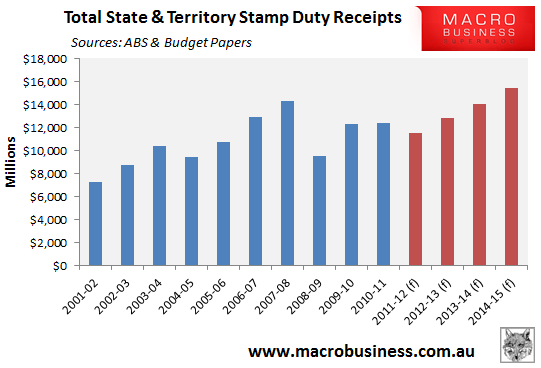
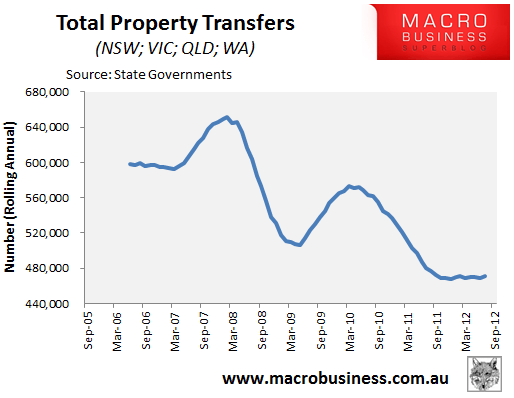
The article concluded by arguing that the ongoing slump in stamp duty receipts, which are a major source of tax revenue for the states and territories, will force further cut backs to government expenditure and public sector jobs.
Out of interest, I decided to chart the proportion of the population working in “public administration and safety” – a proxy for the public sector bureaucracy – against the population in each state and territory in order to see how public sector employment has changed over time.
As shown by the below charts, the bureaucracy has grown significantly since the late-1990s, from around 2.5% of Australia’s population in 1998 to around 3% currently:
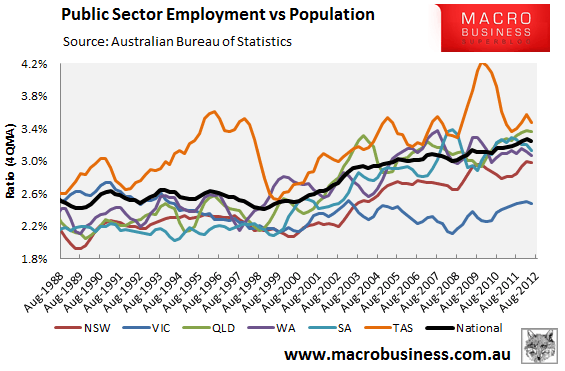
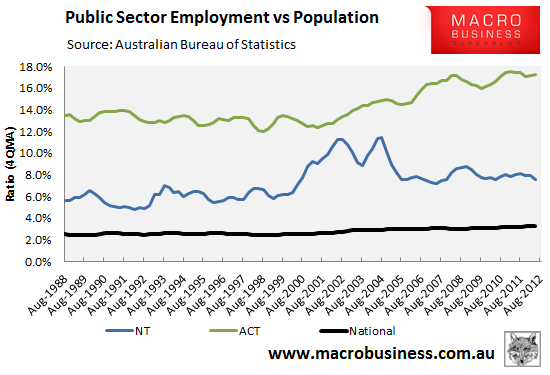
The increase in the public sector workforce could be explained by the surge in taxation revenue following the property boom, which significantly increased stamp duty receipts, as well as the introduction of the GST in 2000, which is redistributed from the Commonwealth to the states and territories. Increasing mining royalties have also played a role in Western Australia, Queensland, and New South Wales. The large boost in the states and territories’ tax revenue allowed them to grow the public service whilst still maintaining healthy finances.
However, with stamp duties and GST revenue no longer growing as expected, and the decline in iron ore and coal prices decreasing mining royalties, the states and territories are now being forced to cut back on expenditure and jobs in an attempt to restore their budgets to surplus and protect their credit ratings.
A back-of-the-envelope calculation suggests that the public service head count would need to be cut by around -70,000 nationally in order to shrink the public service back to its average level since 1984 (2.7% of the population), although the cuts would not be uniform across jurisdictions:
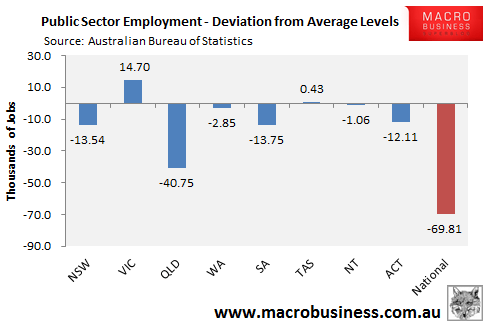
It is interesting to note that while there has been widespread protest at the Newman Government’s plan to cut -14,000 jobs from the Queensland public service, you can see from the above chart that significant further cuts would need to be made in order to return the Queensland public service back to ‘normal levels’.
Twitter: Leith van Onselen. He is the Chief Economist of Macro Investor, Australia’s independent investment newsletter covering trades, stocks, property and yield. Click for a free 21 day trial.

